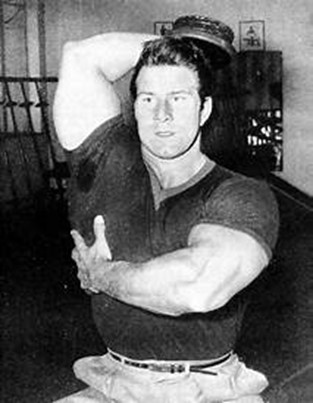Strength Training | Staying in the Game for a Lifetime
Published: Mon, 10/03/22

Hello from Functional Strength!
25-25-20...the strength Bell Curve: at age 72, I have a front row seat for the aging process. I have had a front row seat for the strength and muscle-building process for the past 60 years, having been a crazed resistance training since age 11. It occurred to me that a serious life of strength could be broken out into four definable
chronologic eras: up to age 25, age 25 to age 50, age 50 to age 70 - and over age 70. 25-25-20...year segments.
Most elite alpha strength athletes commence resistance training in their teens. They get traction and start adding muscle. This triggers concurrent increases in raw strength and power. This is the ascendency of the strength curve. Mistakes are made, strategies are examined, used, abandoned. If the nutrition is coordinated with the strength training, gains are amplified. If the right genetics are matched with effective training, nutrient-dense eating, and a favorable training and life situation, the trainee undergoes a radical physical transformation.

Reg Park circa 1955 (shown above):
Park famously maintained an outstanding
physique into his 70s as well as Bill Pearl.
The ascendancy curve peaks in years 25 to 50. With a decade or more of hardcore, proven-effective resistance strategies under their belt, the seasoned trainee peaks his strength bell curve. Strength peaks from ages 30 to 40, though numerous examples exist of athletes peaking earlier than 30 or later than 40. At age 50, the diligent strength athlete begins a mild descent. Ages 25 to 50 are the peak performance years. Strength does not depend on footspeed, reaction time, or hand-eye coordination, ergo, strength can be improved until age 50, in many cases.
Age 50 to 70 is another definable strength era. A man can stay surprisingly strong until age 65. This is a transitional period: the focus changes from comparisons to your own all-time bests, now unobtainable, to comparisons of performance with other athletes the same age. Age group competitions are a godsend to real athletes seeking to retain that spark that training for and competing. This urge is satisfied with age-group competitions.
Past age 70 and you attempt to manage the inevitable decline. I no longer compete but I do not lack for motivation: my motivation is always within inches of my grasp - forget about comparison to past performances of yesteryear - what fires me up is improving on last week. I know exactly what I did last week in my lifting, my cardio, my eating – I can do better this week. Period.
I find motivation in comparing my 70 + strength to my documented teenage strength. Right now, my strength at 72 equates to my 15 year old strength - but I was one strong-ass 15 year old, already competing and overhead pressing 200 + .An excellent strength goal at age 80: be as strong as I was at age 12. I was a bad-ass 12 year old. A damn handful.
Most elite alpha strength athletes commence resistance training in their teens. They get traction and start adding muscle. This triggers concurrent increases in raw strength and power. This is the ascendency of the strength curve. Mistakes are made, strategies are examined, used, abandoned. If the nutrition is coordinated with the strength training, gains are amplified. If the right genetics are matched with effective training, nutrient-dense eating, and a favorable training and life situation, the trainee undergoes a radical physical transformation.

Reg Park circa 1955 (shown above):
Park famously maintained an outstanding
physique into his 70s as well as Bill Pearl.
The ascendancy curve peaks in years 25 to 50. With a decade or more of hardcore, proven-effective resistance strategies under their belt, the seasoned trainee peaks his strength bell curve. Strength peaks from ages 30 to 40, though numerous examples exist of athletes peaking earlier than 30 or later than 40. At age 50, the diligent strength athlete begins a mild descent. Ages 25 to 50 are the peak performance years. Strength does not depend on footspeed, reaction time, or hand-eye coordination, ergo, strength can be improved until age 50, in many cases.
Age 50 to 70 is another definable strength era. A man can stay surprisingly strong until age 65. This is a transitional period: the focus changes from comparisons to your own all-time bests, now unobtainable, to comparisons of performance with other athletes the same age. Age group competitions are a godsend to real athletes seeking to retain that spark that training for and competing. This urge is satisfied with age-group competitions.
Past age 70 and you attempt to manage the inevitable decline. I no longer compete but I do not lack for motivation: my motivation is always within inches of my grasp - forget about comparison to past performances of yesteryear - what fires me up is improving on last week. I know exactly what I did last week in my lifting, my cardio, my eating – I can do better this week. Period.
I find motivation in comparing my 70 + strength to my documented teenage strength. Right now, my strength at 72 equates to my 15 year old strength - but I was one strong-ass 15 year old, already competing and overhead pressing 200 + .An excellent strength goal at age 80: be as strong as I was at age 12. I was a bad-ass 12 year old. A damn handful.
At 72 I am continually looking for ways to challenge myself and evolve my training within my shifting capacities. The key to longevity is perseverance. We hope these articles provide inspiration for your future training endeavors.






If you have any questions please click here. For more information on our training techniques and tactics, click the link below to check out our site!



Thanks
Marty Gallagher
Get Strong! Live Long!
